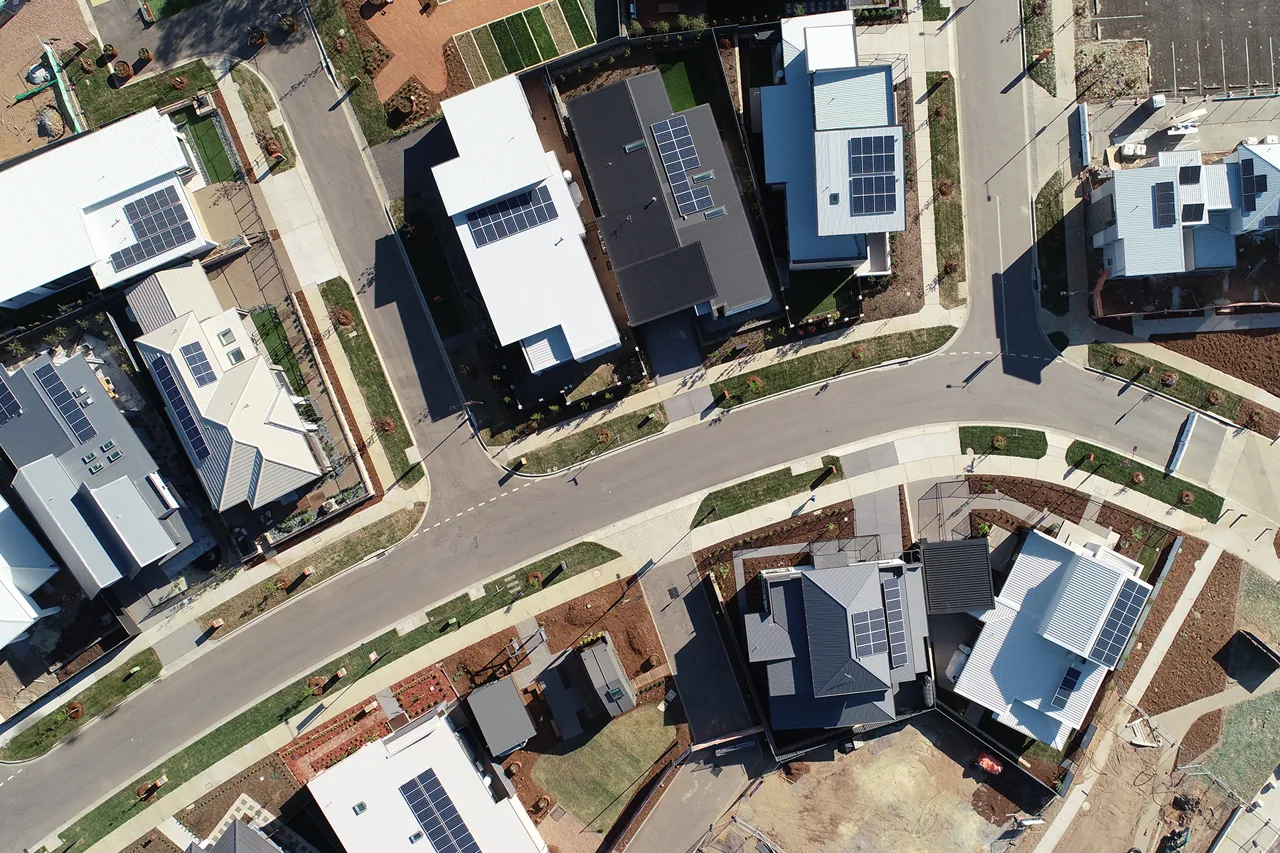
Our homes weigh a tonne - of carbon per square metre
Addressing the upfront carbon intensity of Australian homes
The materials and construction of a typical Australian single-family home lock in more carbon than the home will ever emit through daily operation. This report quantifies the upfront carbon intensity of single-family dwellings, identifies key sources of emissions, and outlines practical pathways for emissions reduction.
Our homes weigh a tonne – of carbon per square metre
May 2025
Our homes weigh a tonne – of carbon per square metre report and call-to-action summary were developed by the Green Building Council of Australia and TSA Riley with support from the CEFC, DevelopmentWA and Landcom.
As we scale up new housing, we must make sure the homes we build today don’t bake in emissions that derail our climate goals.Davina RooneyChief Executive, GBCA
about the industry
The residential sector's critical decarbonisation role
Between 150,000 and 230,000 residential homes commence construction in Australia in any given year. While numbers vary each year, in the past 15 years, about 60 per cent of these homes have been single-family dwellings.1
A new home’s carbon emissions profile consists of:
- Upfront carbon generated from the materials and processes used to build construct a home
- Operational emissions produced through energy consumption during the lifetime of a home
- In-use and end-of-life emissions from materials and processes used during maintenance and demolition.
The Our homes weigh a tonne report states that while operational carbon has been the focus of policy and industry action for years, upfront carbon remains largely overlooked.
Unlike operational emissions, which can be reduced over time, upfront carbon is irreversible once materials are manufactured, and construction is complete.
The residential sector stands to play a critical role in supporting Australia’s 2050 net zero emissions ambitions, by focusing on electrification of homes to take advantage of a decarbonising energy supply and through greater focus on identifying and implementing ways to reduce upfront carbon in new builds.
An active role in driving down emissions
The CEFC invests across the property sector, to support market-leading advances in decarbonisation and deliver best-in-class energy efficiency performance.
The CEFC focus includes improving existing buildings to reduce operational emissions and investing in developing low-carbon building stock.
Our Household Energy Upgrades Fund and green home-loan products, delivered through co-financiers, offer customers discounted finance for measures that will reduce their carbon footprint and lift the sustainability of their homes. Learn more about our property sector investment
1. Building Activity, Australia, ABS, 2025
report findings
Reducing the carbon intensity of new homes
Addressing emissions in the single dwelling sector is critical for Australia to meet its sustainability targets and ensure long-term environmental and societal benefits.
The Our homes weigh a tonne report found constructing and furnishing a typical single-family Australian home results in 185 tonnes of upfront carbon emissions.
This contrasts with the same home’s operating emissions when estimated over a 60-year life span. These can range from near zero for a home with rooftop solar to 24 tonnes.
An average of 119,000 new detached homes are expected to be built each year, which is equivalent to 22 MtCO₂-e per year and a total of approximately 113 MtCO₂-e upfront carbon between 2024 and 2029. The variance in emissions across average Australian homes, depending on location, is approximately plus or minus 10 per cent, influenced primarily by local material and design practices.
The top 100 home builders consistently account for 31 to 39 per cent of new residential dwellings in Australia, and this concentration of market share presents a clear opportunity for larger home builders to drive meaningful change in reducing upfront carbon emissions.
Modelling shows that reducing the carbon intensity of key materials such as concrete, cement, steel and timber contributes to a 13 per cent reduction in the overall carbon footprint.
However, the report finds greater reductions will not be achievable through material changes alone and calls for a mandatory performance target at the building level, in the form of a national upfront carbon intensity target.
Reducing embodied carbon in new housing is one of the next frontiers for decarbonisation. With the right investment in innovation, we can scale up low-carbon construction and create new opportunities for Australian manufacturers and clean technology providers.Michael Di RussoHead of Property, CEFC





